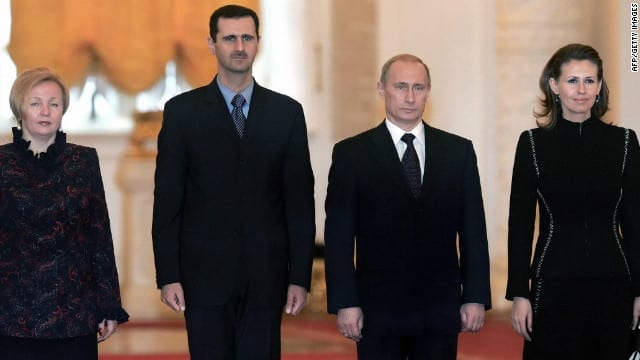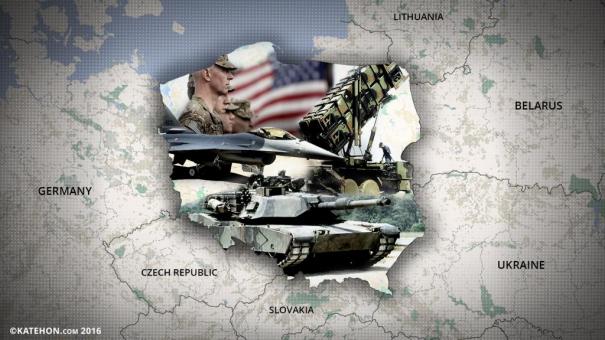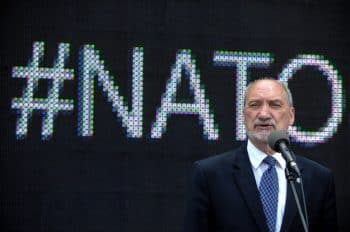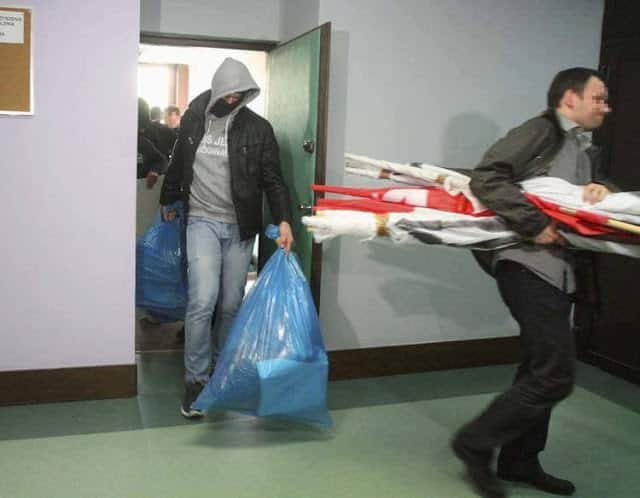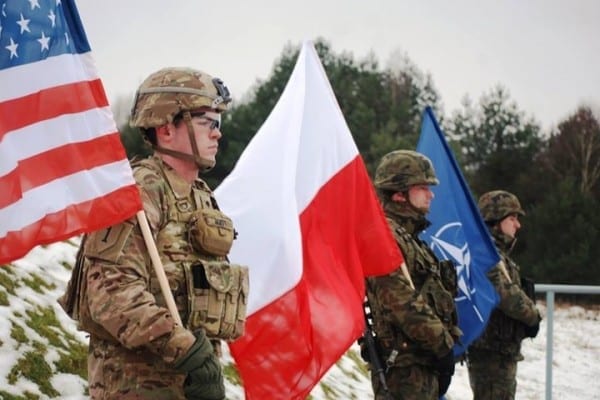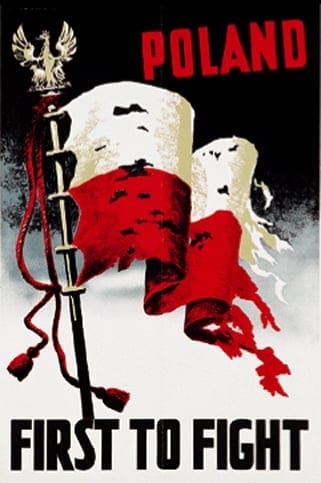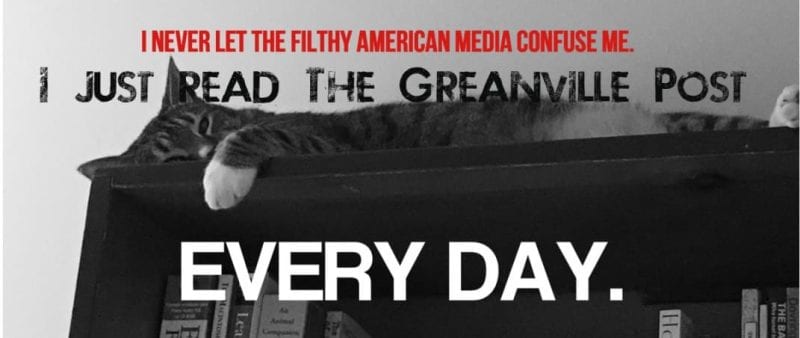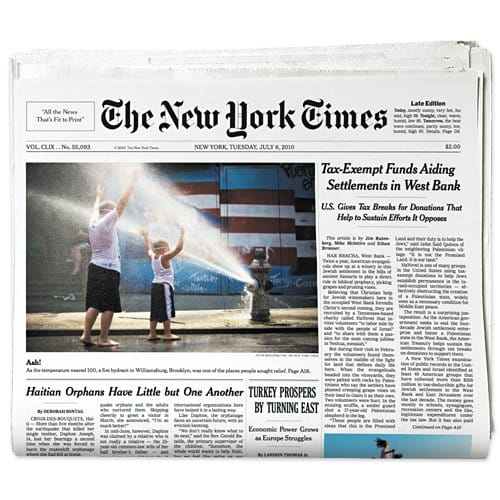|
The New York Times’s masthead logo, “All The News That’s Fit to Print,” dates back to 1896, the first year of Ochs-Sulzberger family control of the paper, and both the family control and arrogant belief in the benevolence and superior judgment of the dominant owners persist to this day.
The 1997 Proxy Statement of The New York Times Company explains the special voting rights that assure family control in terms of the desire for “an independent newspaper, entirely fearless, free of ulterior influence and tinselfishly devoted to the public welfare.” The paper’s independence, however, and the century-long accretion of influence and wealth by the owners, has been contingent on their defining public welfare in a manner acceptable to their elite audience and advertisers.
In the 1993 debate over the North American Free Trade Agreement (NAFTA), for example, the Times was aggressively supportive of the agreement, and solicited its advertisers to participate in advertorials with a letter touting the “central importance…of this important cause” and the need to educate the public on NAFTA’s merits, which polls showed that most citizens failed to appreciate.
As the paper regularly takes positions on domestic and foreign policy issues within parameters acceptable to business and political elites, it is evident that the owners have failed to escape class, if not selfish, interests in defining public welfare and what’s fit to print.
 Arthur Sulzberger: pretensions aside, he never deviated from his class interest. In debates within the range of elite opinion, moreover, the Times has not been “fearless,” even in the face of gross outrages against law, morality, and the general interest. During the McCarthy era, for example, the management buckled under to the Eastland Committee by firing former communist employees, who spoke freely to management but would not inform on others, and more generally it failed to oppose the witch hunt with vigor and on the basis of principle. An editorial of August 6, 1948, attacking the use of the Fifth Amendment before the House Committee on Unamerican (sic) Activities, was written by the publisher, Arthur Hays Sulzberger.
Among other cases, the paper did not oppose the Vietnam War till late in the game, and then on grounds of unwinnability and excessive cost to us; it failed to oppose the U.S. sponsorship of a system of National Security States in Latin America, or the Central America wars, and protected these murderous enterprises by eye aversion and biased reporting. Even Reagan’s “supply side economics” was treated gently by the editors (“No one else has yet offered an option half so grand for dealing with stagflation,” ea., March 17, 1981), and the paper’s top reporter, James Reston, stated, falsely, that Reaganomics involved “a serious attempt…to spread the sacrifices equally among all segments of society” (February 22, 1981). The Times played a supportive propaganda role in the huge Carter-Reagan era military buildup to contest the inflated Soviet Threat; and its highly favorable review of The Bell Curve, and more recent extensive publicity given the Thernstroms, have been notable contributions to the ongoing assault on affirmative action.
Business Interests
[dropcap]T[/dropcap]he dominant owners of The New York Times Company-a holding company-control a large and complex business organization, which had 1997 revenues of $2.9 billion and earnings of $262 million. (By 2015, mirroring the decline of print media, the NYT posted only $1.2 bilion in earnings.—Eds)
Among its 50 or more subsidiaries, the Times Company owns 21 newspapers in addition to the New York Times and Boston Globe, 8 TV and 2 radio stations, various electronic and other news and distribution services, a magazine group with a specialty in golf, forest products companies, and 50 percent ownership of the International Herald Tribune, with the Washington Post owning the balance.
The holding company’s Class A stock is listed on the New York Stock Exchange and traded at about $65 per share in February 1998. The Sulzberger family owns 17.5 million shares of the 97.6 million Class A shares outstanding, or 18 percent; but it owns at least 87 percent of the 425,000 Class B shares, which are entitled to elect a majority (nine) of the 14 directors. The value of the Sulzberger family holdings in February 1998 amounted to $1.2 billion. In 1997, family members Arthur Ochs Sulzberger and Arthur Ochs Sulzberger, Jr. also drew compensation from the company in salaries, bonuses, and options, totaling $1.5 million and $1 million, respectively.
These owners regularly associate with other rich and powerful people, who are anxious to cultivate the acquaintance of those who control the country’s most influential newspaper. Such contacts occur on the board of the holding company, which includes business leaders drawn from IBM, First Boston (a major investment bank), the Mercantile Bank of Kansas City, Bristol-Myers Squibb (drugs), Phelps Dodge (copper), Metropolitan Life, and other corporations. The company also has a $200 million line of credit with a group of commercial banks, and periodically uses investment banks to underwrite its bonds and notes and help it buy and sell properties. These financiers and business executives press for a focus on the bottom line, and they would not be pleased if the Times took positions hostile to the interests of the corporate community (which, contrary to right-wing mythology, the paper does not do). [Note: The continued decline in profitability would indicate under normal capitalist conditions that the paper might be sold off or be the subject of some hostile takeover. However, given the enormous propaganda value of the paper to the whole global ruling class as a tool of hybrid war, it is not far-fetched to assume that huge amounts are being injected into the owners’ coffers under the table, by entities ranging from the CIA to various interested foreign parties, among which the Saudis, again, along with other Gulf despots, figure as the most likely candidates.—Eds.]
Increasing Hegemony of Advertisers
[dropcap]B[/dropcap]ack in the 1970s, the Times was stumbling economically, profits virtually disappeared, and its stock price fell from $53 in 1968 to $15 in 1976. In an article “Behind The Profit Squeeze At The New York Times” (August 30, 1976), Business Week assailed the management for lethargy, and because it “has also slid precipitously to the left and has become stridently anti-business in tone, ignoring the fact that the Times itself is a business-and one with very serious problems.” When this article appeared, measures had already been taken to rectify the paper’s business shortcomings and its supposedly “left” tendency as well. A. M. Rosenthal, a close friend of William Buckley, Jr. (who referred to Rosenthal as “a terrific anticommunist”), and a self-described “bleeding-heart conservative” (the search for that heart remains a challenge to independent investigators after 25 years), was installed as executive editor. Editor John Oakes was ousted, the editorial board was restructured, with the more conservative Roger Starr and Walter Goodman replacing Herbert Mitgang and Fred Hechinger, and control over all aspects of the paper was more centralized.
 Abe Rosenthal—unapologetically pulling to the right. Ralph Nader asserted in 1993 that Rosenthal “did more to damage consumer causes than any other person in the United States…” Same can be said for international coverage. Times policy shifted to the right, the paper was reoriented toward softer and more advertiser friendly news, and the common “policy” root of news, editorials, and book reviews became more conspicuous. Rosenthal established a Product Committee, and openly emulated Clay Felker’s New York magazine’s pioneering of a news product featuring gossip on the shows, restaurants, discos, attire, decor, and other cultural habits of the upwardly mobile, attractive to fashion trade and other advertisers. More and more articles were on the Beautiful People living well (e.g., “Living Well Is Still The Best Revenge,” celebrating the de La Rentas, December 21, 1980), and fashion designers (e.g., “The Business of Being Ralph Lauren,” NYT Magazine, September 18, 1983), and entire sections of the paper were allocated to Men’s (or Women’s) Clothing, House & Home, Food and Dining, and Style.
On February 26, 1998, the Times introduced a new section entitled “Circuits,” which will cover “the personal side of digital technology,” and hopefully will attract some of the ad dollars going to Wired and Electronic Media.
With the advertising recession of 1991, the pace of integration of advertising and editorial was stepped up, with regular supplements to the magazine on “Fashions of the Times,” and with fashion news such as the shortening of women’s skirts beginning to make the front page. On March 23, 1993, the Sunday Magazine featured the big names of fashion-Calvin Klein, Ralph Lauren, Donna Karan, Bill Blass, Oscar de la Renta, et al-with their photos and sample product lines, in a purported news article.
Later in 1993, an entire issue of the magazine was devoted to fashion, and in the paper’s own Fall 1993 advertising supplement, an A&S department store ad had printed on it “All the fashion news that’s fit to print,” with the A&S logo printed right below this. That is, the Times had loaned its own advertising logo, supposedly signifying journalistic integrity, to an ad purchaser.
Such attention to advertisers was paralleled by a shift of news interest to the suburbs and other locales in the New York area with affluent householders, and away from the Bronx, Brooklyn, Queens, and Staten Island. It also meant lightening up on investigative reporting that would threaten local real estate and developer interests, although this was not new.
Robert Caro, in his The Power Broker: Robert Moses and the Downfall of New York (1974), assailed the Times for its uncritical support of this political czar, whose ruthless infrastructure development “very nearly destroyed New York’s physical fiber” (John Hess). Caro says that the Times “fell down on its knees before him, and stayed there year after year.” Writing in 1985, Hess says that “Moses is long gone…yet the Times enthusiastically supports billion dollar projects that will strangle its own neighborhood.”
The firing of Sidney Schanberg from his metropolitan column beat in 1986 was another clear signal that harsh criticism of local real estate developers and associated political interests was no longer acceptable to the paper. For advertisers, serious consumer reporting is “anti-business,” and it went into decline in the 1970s and after. Ralph Nader asserted in 1993 that Rosenthal “did more to damage consumer causes than any other person in the United States,” as the Times’s lead in downgrading consumer issues was followed by the Washington Post and then by the rest of the press. Nader says that more than a dozen Times reporters complained to him that they were pushed away from “hot-potato areas into soft consumer advice or other non-consumer assignments.”
The Times was late on many key business stories, like the S&L scandals, the Bank of Credit and Commerce International case, the mid-1980s phony liability crisis contrived by the insurance industry, the misrepresentations of the Bush Task Force on Regulatory Relief, and others. Reporters told Nader that “New York doesn’t like these stories,” or that they must get company responses to charges against them-and as Nader notes, the companies learned “simply not to return calls, knowing that that tactic would block the story deadline. These companies know about Rosenthal too.”
Other Elite Connections
[dropcap]T[/dropcap]imes officials and reporters have other (nonbusiness) ties to the elite that make a class and establishment bias inevitable and natural.
In his gentle history of the Times, Without Fear or Favor, veteran Times reporter Harrison Salisbury points out that the paper was dominated in the post World War II era by men “of the same social and geographic circle,..[who] had gone, by and large, to the same schools, Groton, again and again, Groton; they had married into each others families; they were Yale and Harvard and Princeton,” etc. They were lawyers, bankers, businesspeople and journalists; and many were notables in the CIA and other parts of the government. These friends had “a common view of the world, the role of the United States, the nature of the communist peril.”
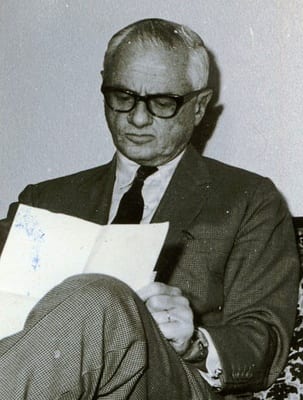 Cyrus Sulzberger: the man who would be a foreign correspondent. In reality he was a CIA informer and a pathetically mediocre journalist. His columns were painfully boring, the stilted writing further aggravated by the overweening pretensions. Salisbury devotes many pages to the CIA-Times connection, questioning but not disproving the claim by Carl Bernstein in Rolling Stone in 1977 that Cyrus Sulzberger, the Times’s long-time chief European correspondent, was a knowing CIA “asset,” and that the paper gave cover to some ten CIA agents from 1950-1966. Salisbury supplies an impressive list of CIA people-Allen Dulles, James Angleton, Frank Wisner, Kim Roosevelt, Richard Helms, and others, who were good friends of, and wined, dined, and vacationed with, a large array of Times officials and reporters. He acknowledges that in the early years there had been a “relationship of cooperation between The Times and the Agency, a relationship of trust between the CIA and Times correspondents,..” (quoting CIA official Cord Meyer) and that friendly connections persisted thereafter.
When the Times published a series on the CIA in 1966, it gave a draft to former CIA chief John McCone for prior review, an action that Salisbury felt entirely without significance, as McCone’s reactions could be accepted or ignored by the paper. But Salisbury misses the possibility that the willingness to bring McCone into the editorial process might reflect the limited framework and non-threatening character of the Times’s effort.
The Times-CIA relationship, and its complexity, was displayed in 1954, when CIA head Allen Dulles persuaded Arthur Hays Sulzberger to keep reporter Sidney Gruson out of Guatemala, as the U.S. was organizing the overthrow of the Arbenz government. Gruson, although a Cold Warrior and strongly supportive of U.S. policy, was not a straight propagandist, so Dulles claimed to possess derogatory information on him, and he was kept away. But Sulzberger kept pressing Dulles for evidence supporting his charges against Gruson, and was extremely annoyed when it was never provided, and he realized he had been used by the CIA to fine-tune a propaganda effort. (The Times was outrageously biased in its coverage of Guatemala in 1953-1954-and later-but not quite enough to suit the CIA.)
The Times today remains protective of the CIA, but this is almost surely a result of its broader support of U.S. foreign policy rather than any specific links to the CIA, which it will, on occasion, slap on the wrist for demonstrated misbehavior (e.g., ea., “The CIA’s Men in Iraq,” May 13, 1997).
Inside Information, Revolving Doors, and Cooptation
[dropcap]W[/dropcap]hatever the precise nature of the Times link with the CIA and other govemment agencies, the friendships and common understandings among these Cold Warriors and members of an economic, social, and political elite have made for a built-in lack of scepticism and critical and investigative zeal on the part of the editors and leading reporters.
These press recipients of sometimes privileged information from friends have not been inclined to treat the suppliers without favor. Max Frankel, longtime editor and executive editor after Rosenthal, became extraordinarily close to Henry Kissinger in the Nixon years, and Robert Anson notes that Kissinger “put that intimacy to good use, employing Frankel’s trust to delay stories…; boost his boss…; and, on more than a few occasions-the Administration’s supposed unconcem about Marxist Salvador Allende being a prime example-spread flat-out falsehoods. ”
 “Scotty Reston”, star celebrity reporter. Always willfully naive about the insidious corrosion of class, most Americans, including fellow journalists, rarely objected to Reston’s extensive personal links with the famous and powerful. James Reston, the Times’s most famous reporter, was on close terms with a string of presidents and secretaries of state, but in the strange mores of U.S. journalism, the resultant compromised character of his reporting did not diminish his professional standing.
Bruce Cumings, writing about Secretary of State Dean Acheson in 1950, states that “Acheson vented his ideas through our newspaper of record, James Reston’s lips moving but Dean Acheson speaking.” And Reston spoke of his reliance on the “compulsory plagiarism” of “well-informed officials,” and he even once titled one of his articles “By Henry Kissinger With James Reston.”
As the Reston story suggests, the most common pattern of serving the political establishment is not by directly telling lies, but rather by omission, and by letting officials tell lies that remain uncorrected. Salisbury describes the internal debate over how far the paper should go in accommodating propaganda, the upshot of which was that the Times would “leave things out of the paper,” or would publish statements known to be false if U.S. officials “were willing to take responsibility for their statements.” What the Times would not do is publish unattributed lies. This is the high principle underlying news fit to print.
 Leslie Gelb: A prominent member and operative of a criminal establishment, Gelb spans the whole arc of class rule positions, from CIA goon to “theoretician”, to propagandist. The Times’s close relationship with business and government has also been reflected in a revolving door of personnel. Most notable were Leslie Gelb’s moves, from director of policy planning at the Pentagon (1965-68) to the Times, then to policy planning at the U.S. State Department (1977-79), and then back to the Times as diplomatic correspondent, Op Ed column editor, and foreign affairs correspondent(1981-93), and then on to head the Council on Foreign Relations, the most important U.S. private organization of foreign policy elites, with ties to both business and the CIA and State Department.
Another notable trip was of Richard Burt, the Times’s Pentagon correspondent during key Cold War years (1974-83), who moved into the Reagan State Department in 1983, where he quickly displayed openly the ultra Cold War bias that was ill-concealed in his work as a Times reporter.
Roger Starr’s move from the construction business to New York City Housing Commissioner to the editorial board was an important reflection of the Times’s new look in the 1970s.
The Times has attracted many quality reporters over the years. But power at the paper still flows down from the top, affecting hiring, firing, promotion, assignments, and what reporters can do on particular assignments.
 Ray Bonner: eased out due to a propensity to truth telling. As noted regarding consumer reporting, if “New York” (the editors, reflecting Times policy) doesn’t like tough stories, reporters will learn to avoid them, or leave the paper, and many good and principled ones have left. If writers are too hard hitting in criticizing theatrical fiascos that represent heavy investments, as Richard Eder was in the 1980s, or on local developer abuses, as Schanberg was, they are eased out. In writing on topics on which the Times has an ideological position and “policy,” like the Israeli-Palestinian conflict, or Russia and its “reform” process, or health care reform and the Social Security “crisis,” the reporters all toe a party line, which either comes naturally to them or to which they adapt.
Just as Richard Burt was hired in the 1970s to provide the proper accelerated Cold War thrust in Pentagon reporting, so during the Central American wars of the 1980s, the Times deliberately hired and fired to achieve a policy line that accommodated the Reagan-Bush support of contra terrorism and the violent regimes of El Salvador and Guatemala.
The firing of Raymond Bonner and installation of Shirley Christian, James LeMoyne, Mark Uhlig, Bernard Trainor, Lydia Chavez, and Warren Hoge assured this apologetic service.
In short,
The Times is without question an establishment newspaper; as Salisbury says of Max Frankel, “The last thing that would have entered his mind would be to hassle the American Establishment of which he was so proud to be a part.”
What this means, however, is that the paper is not “without fear or favor”-rather, it favors the establishment, and fears those who threaten it.
A footnoted version of this article is available from the author for $2:
2300 Steinberg-Dietrich Hall, University of Pennsylvania, Philadelphia, PA 19104.
|
![]() Dr. Vandana Shiva is a philosopher, environmental activist and eco feminist. She is the founder/director of Navdanya Research Foundation for Science, Technology, and Ecology. She is author of numerous books including, Soil Not Oil: Environmental Justice in an Age of Climate Crisis; Stolen Harvest: The Hijacking of the Global Food Supply; Earth Democracy: Justice, Sustainability, and Peace; and Staying Alive: Women, Ecology, and Development. Shiva has also served as an adviser to governments in India and abroad as well as NGOs, including the International Forum on Globalization, the Women’s Environment and Development Organization and the Third World Network. She has received numerous awards, including 1993 Right Livelihood Award (Alternative Nobel Prize) and the 2010 Sydney Peace Prize.
Dr. Vandana Shiva is a philosopher, environmental activist and eco feminist. She is the founder/director of Navdanya Research Foundation for Science, Technology, and Ecology. She is author of numerous books including, Soil Not Oil: Environmental Justice in an Age of Climate Crisis; Stolen Harvest: The Hijacking of the Global Food Supply; Earth Democracy: Justice, Sustainability, and Peace; and Staying Alive: Women, Ecology, and Development. Shiva has also served as an adviser to governments in India and abroad as well as NGOs, including the International Forum on Globalization, the Women’s Environment and Development Organization and the Third World Network. She has received numerous awards, including 1993 Right Livelihood Award (Alternative Nobel Prize) and the 2010 Sydney Peace Prize. Nauseated by the
Nauseated by the

